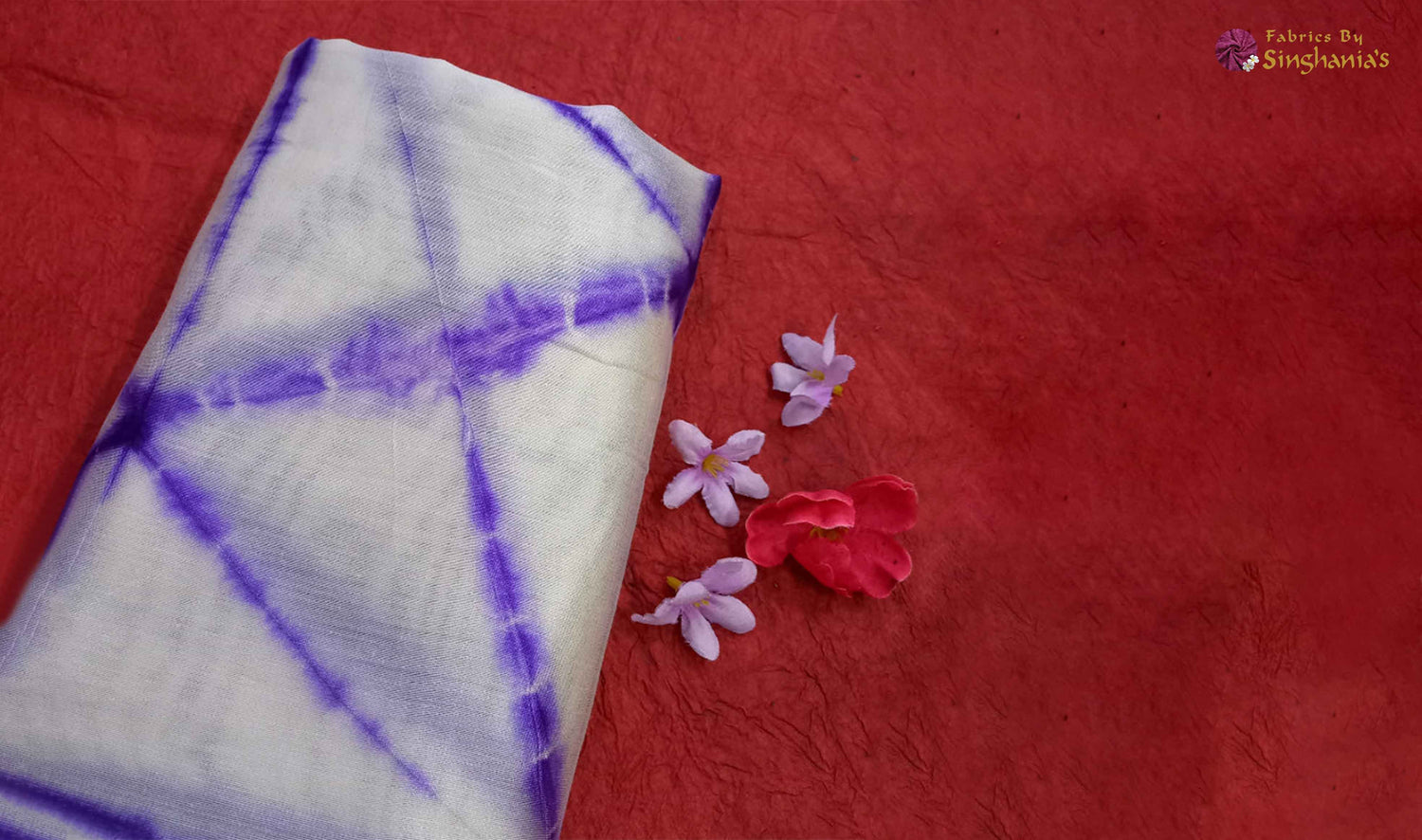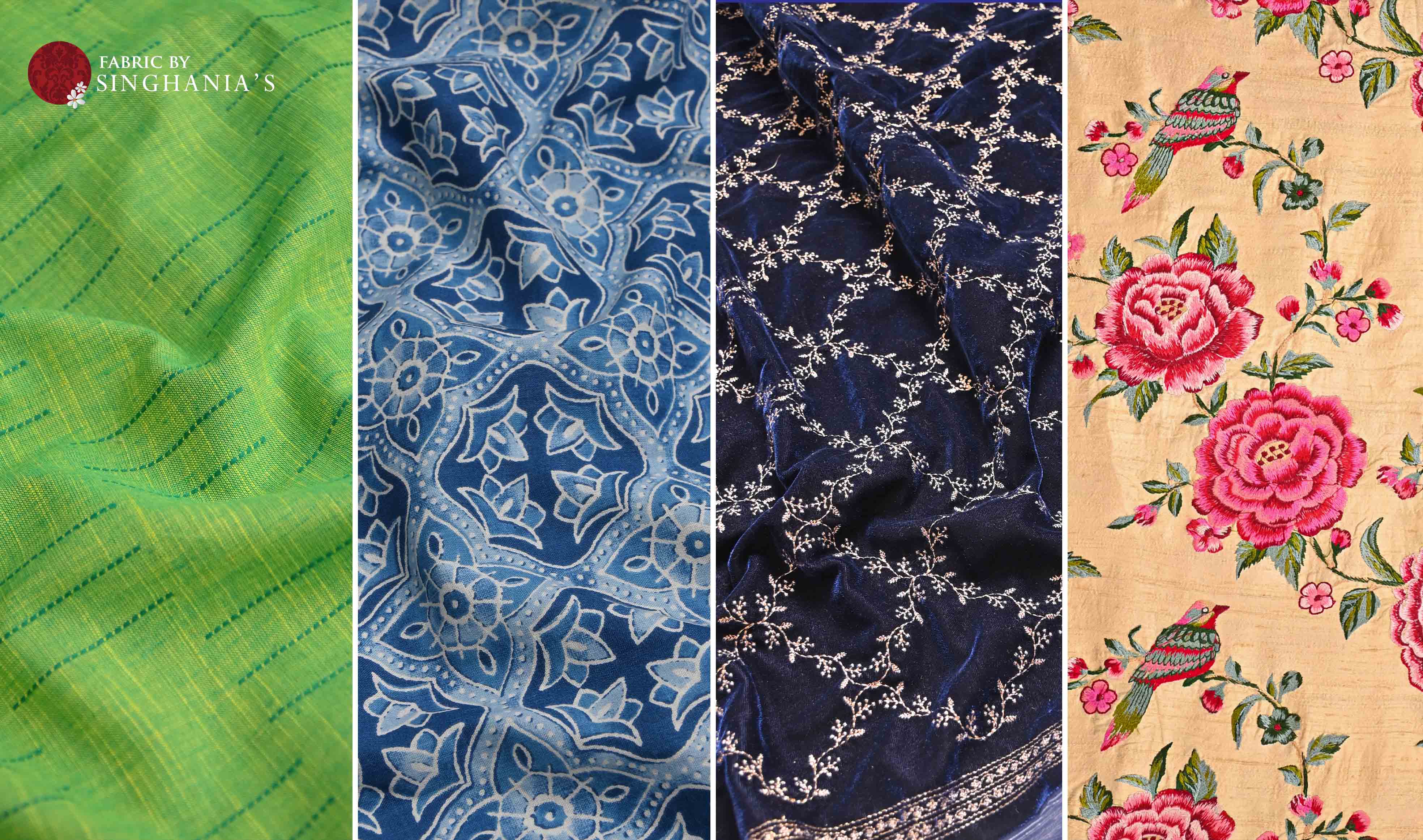
Crepe fabric is a lightweight fabric having a slightly wrinkled or crinkle appearance achieved during the manufacturing process using specialised weaving, twisting, or chemical treatments. The word "crepe" comes from the French word "crêpe," which means "crimped" or "wrinkled." Crepe fabric can be manufactured from a variety of fibres, including silk, wool, cotton, synthetic fibres such as polyester, and fibre mixtures.
HISTORY
- Crepe fabric has ancient origins in societies like China and India.
- It gained popularity in Europe in the 19th century due to advancements in weaving techniques for its crinkled texture.
- Crepe fabric was a hit in women's fashion during the "Roaring Twenties" and the Art Deco era.
- Manufacturing advancements and synthetic fibres expanded fabric options in the 20th century.
Crepe fabric remains popular in contemporary fashion due to its tactile appeal and versatile use.
Here's a brief overview of some common types of crepe fabric:
- Crepe de Chine: A lightweight, fine-textured crepe fabric made from silk or synthetic fibres. It has a slightly crinkled surface and a subtle shine, making it popular for dresses and blouses.
- Georgette: A sheer and lightweight crepe fabric with a slightly grainy texture. It drapes beautifully and is commonly used for flowy dresses, scarves, and blouses.
- Wool Crepe: Made from wool fibres, this crepe has a more substantial weight and is often used for tailored suits and coats. It has a natural stretch, resilience, and draping qualities.
- Cotton Crepe: A breathable and comfortable option, cotton crepe has a crinkled texture and is used for casual and summer clothing like dresses and tops.
- Satin Crepe: Mixes the smoothness of satin with the texture of crepe, creating a fabric with a little sheen and crinkled looking surface. It's often chosen for formal wear and evening attire.
VERSATILITY
Crepe fabric is adaptable and can be worn throughout the year. But because of its lightweight and breathable character, it is especially well-suited for spring and summer, making it pleasant in warmer weather. The fabric can be moulded into the creation of fashionable dresses, blouses, and other clothing appropriate for these seasons. Crepe fabric, however, may be incorporated into fall and winter ensembles with suitable layering, adding a sophisticated touch to cooler weather outfits. And they can be maintained easily.
INTERESTING FACTS:
- Crepe fabric's popularity is widespread globally, especially in fashion-forward countries such as France, Italy, and Japan.
- Designers in these nations leverage crepe fabric's unique qualities to craft stylish and sophisticated clothing.
- Its breathability makes it a preferred choice in warmer regions, like India and parts of Southeast Asia, offering both comfort and style.
- The fabric's wrinkle-resistant properties have contributed to its popularity in travel-friendly fashion, catering to countries with active lifestyles.
If you're interested in exploring a variety of high-quality crepe fabrics, consider checking out the selection available at FabricBySinghanias-online and offline, where you can discover an array of options to suit your creative and fashion needs. You can also buy Crepe fabric online through our various social media channels.



